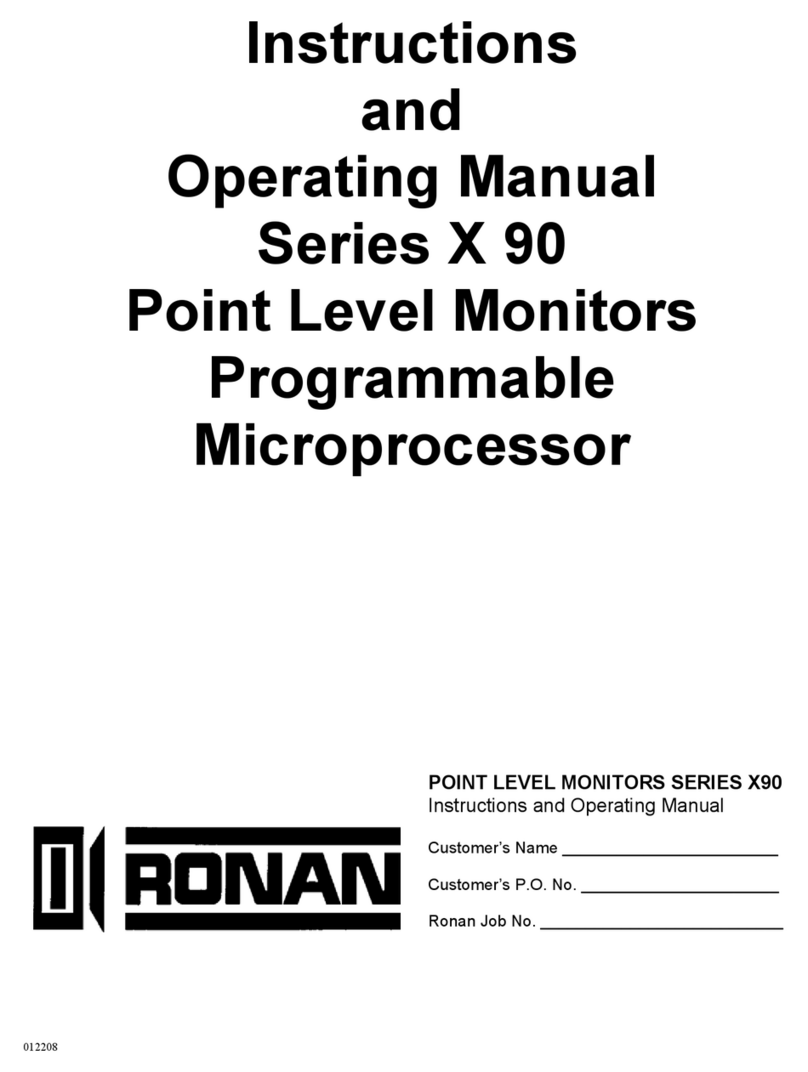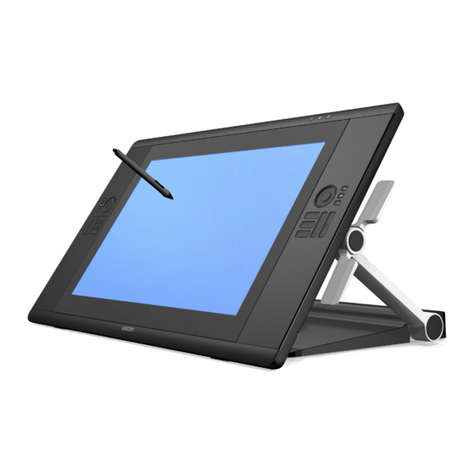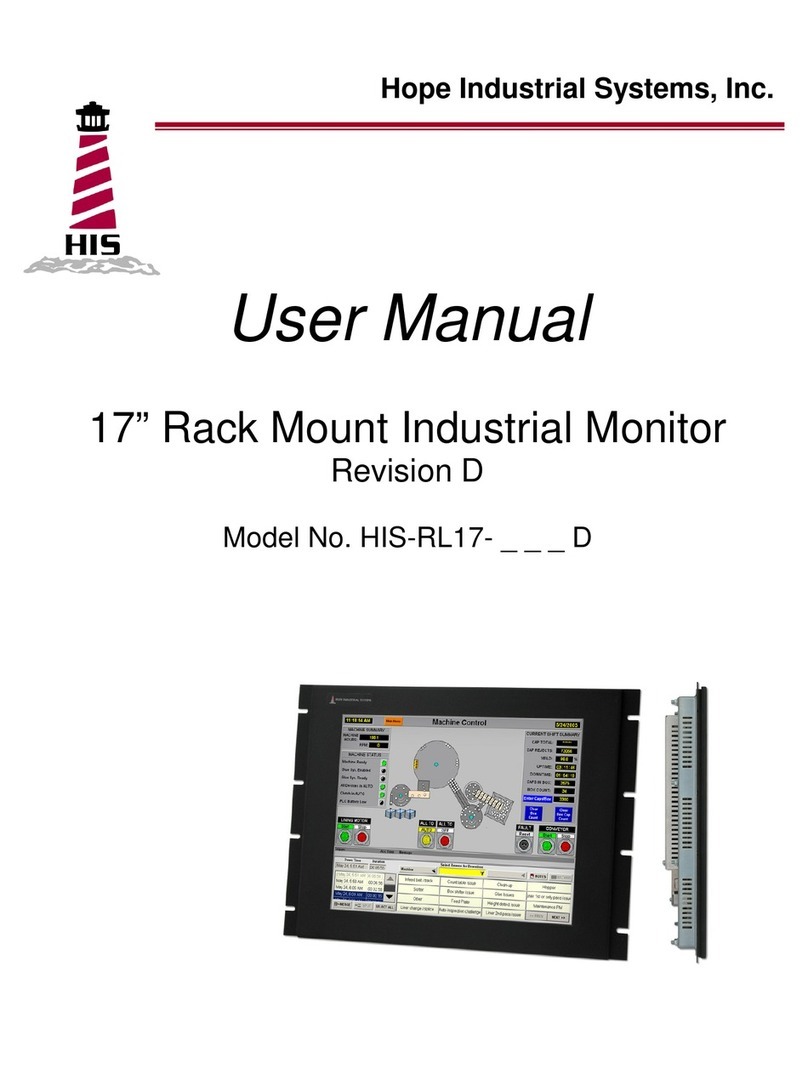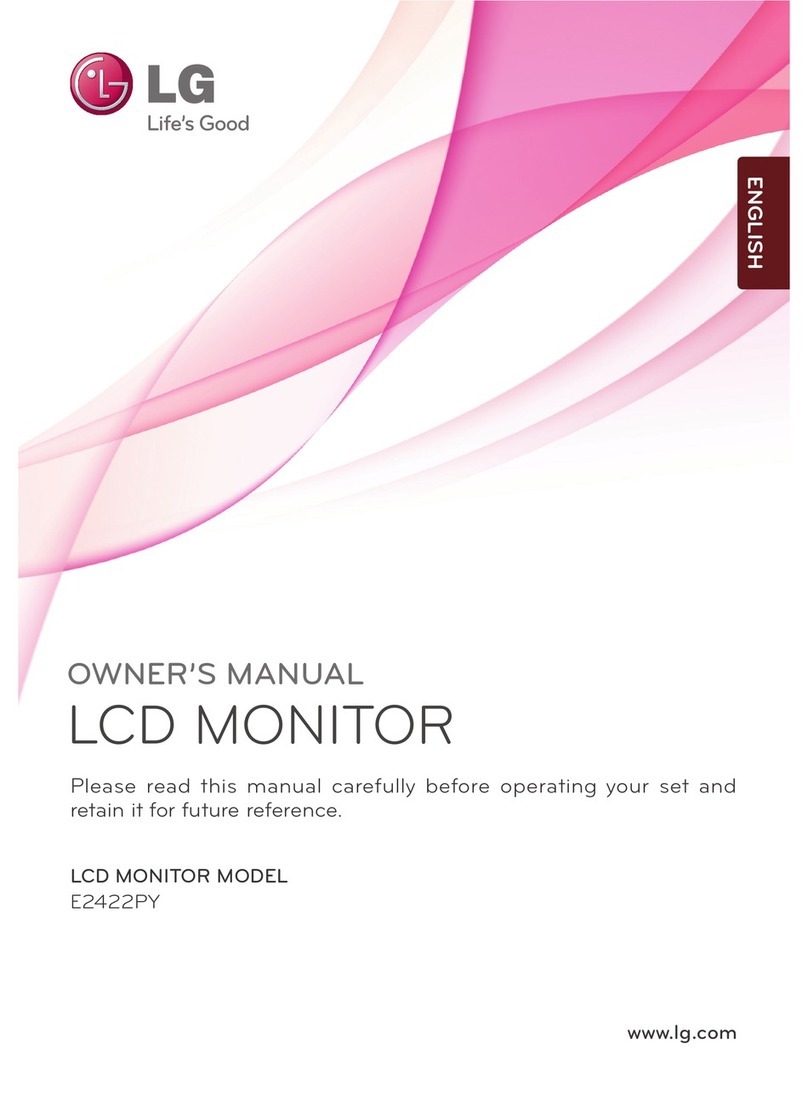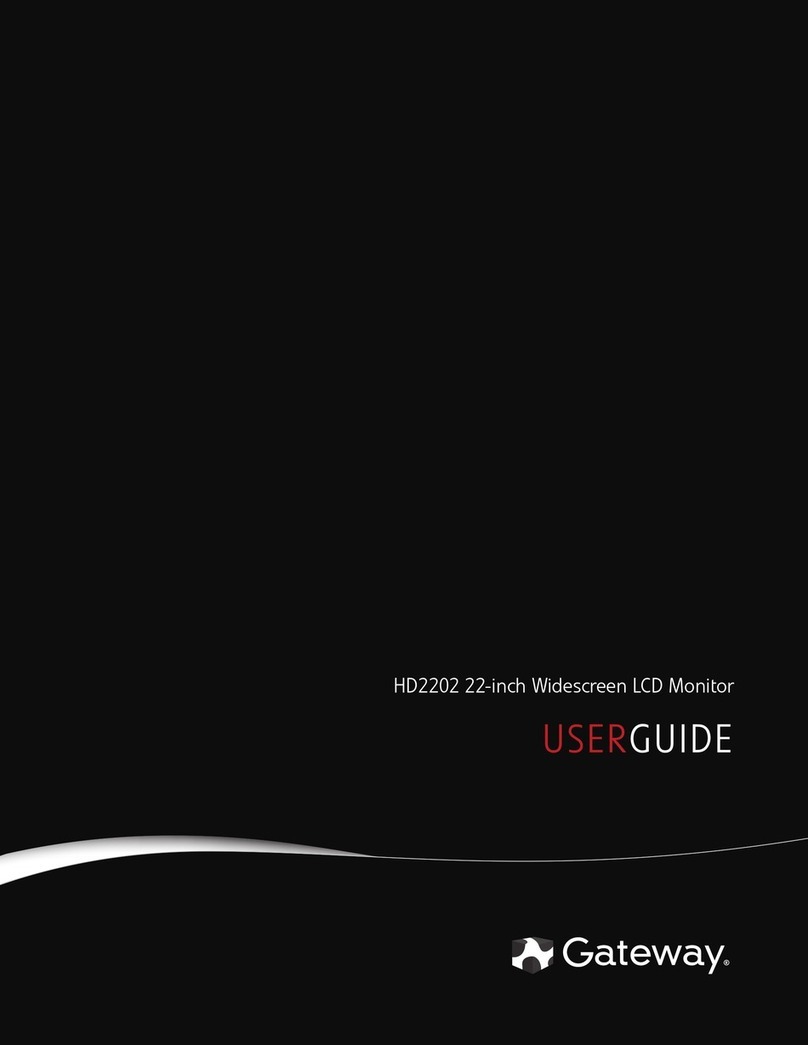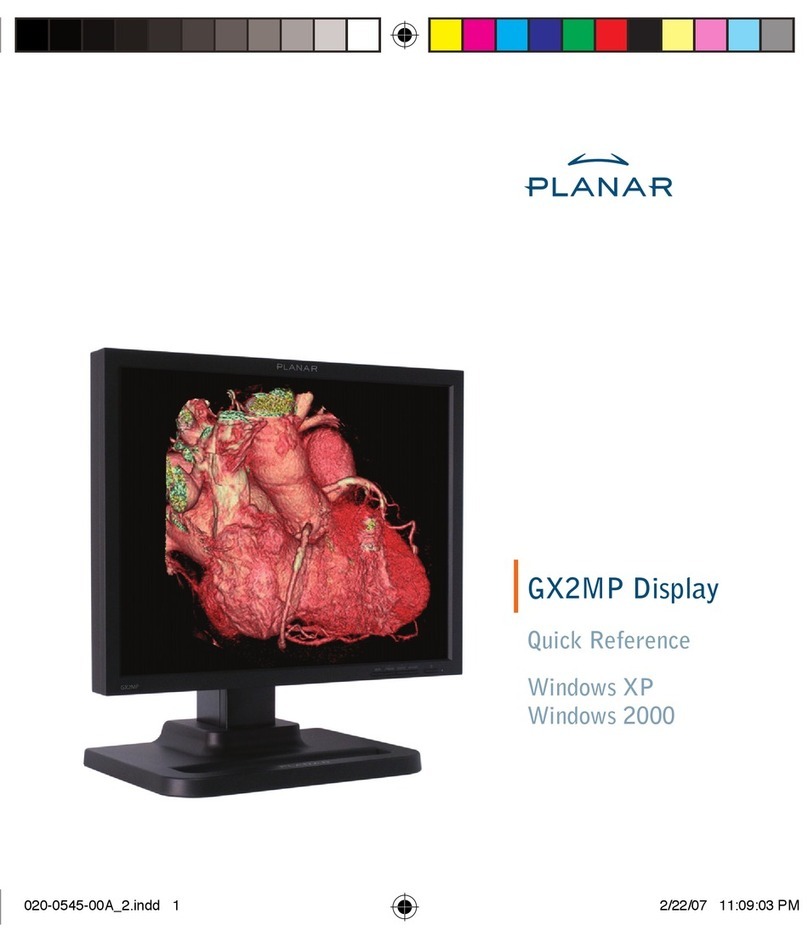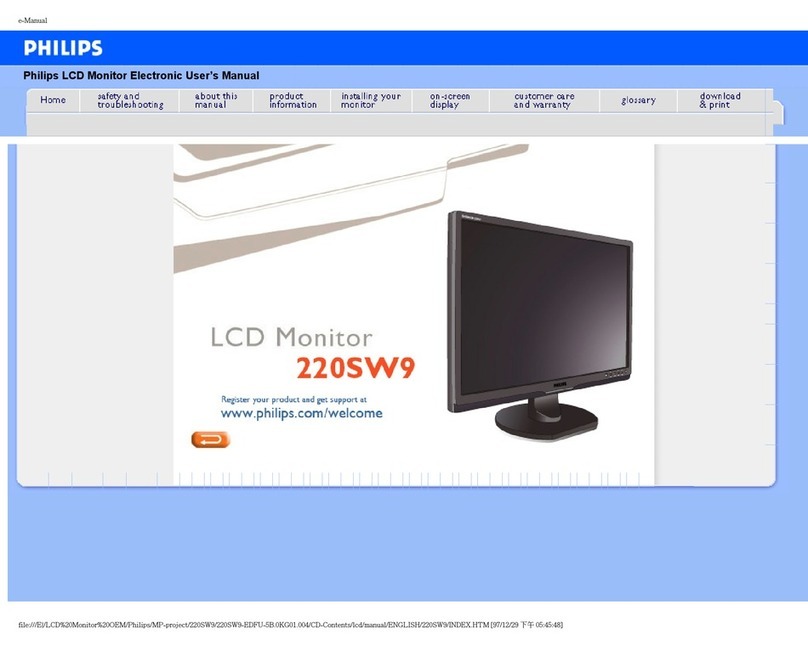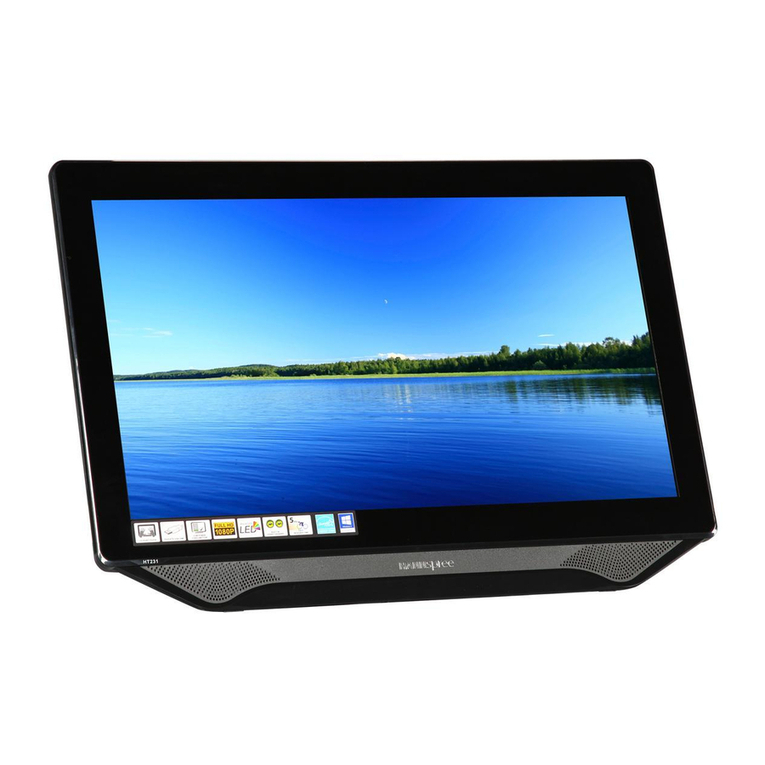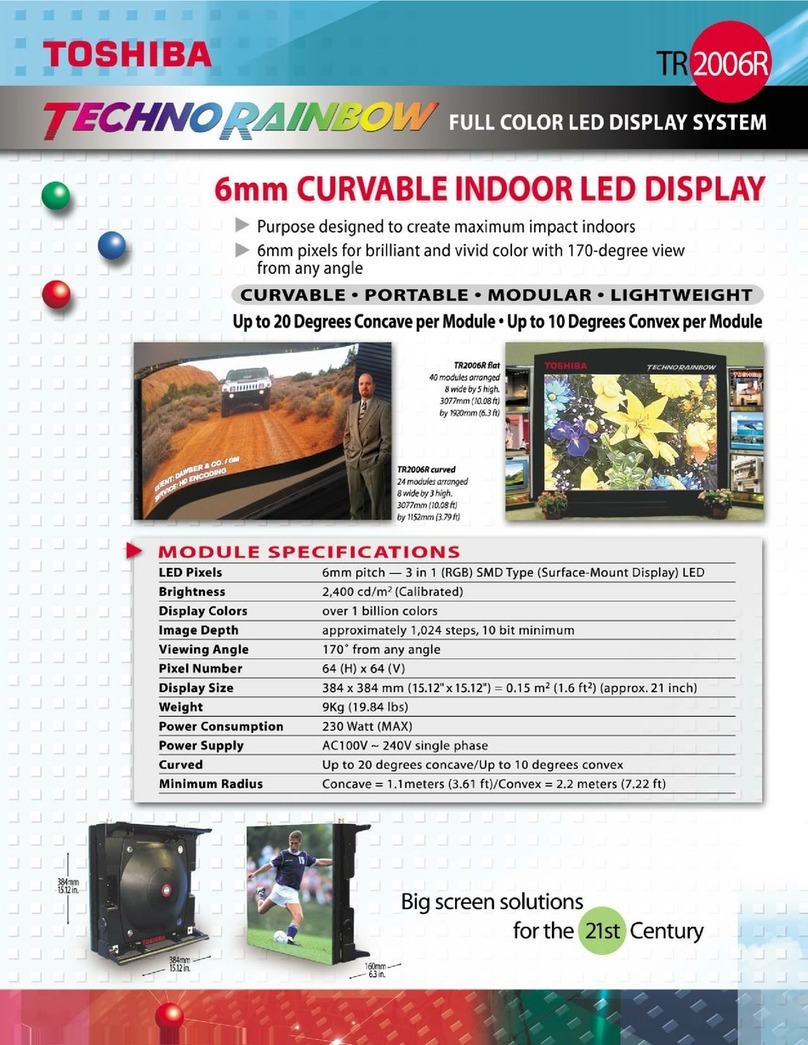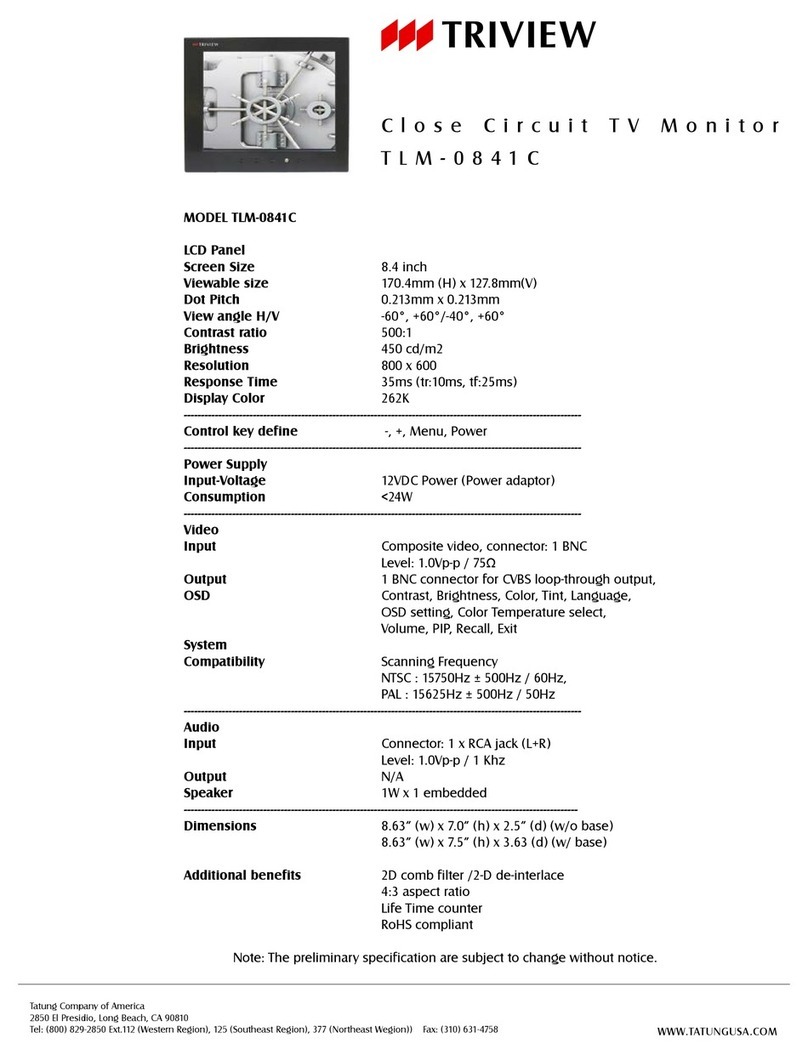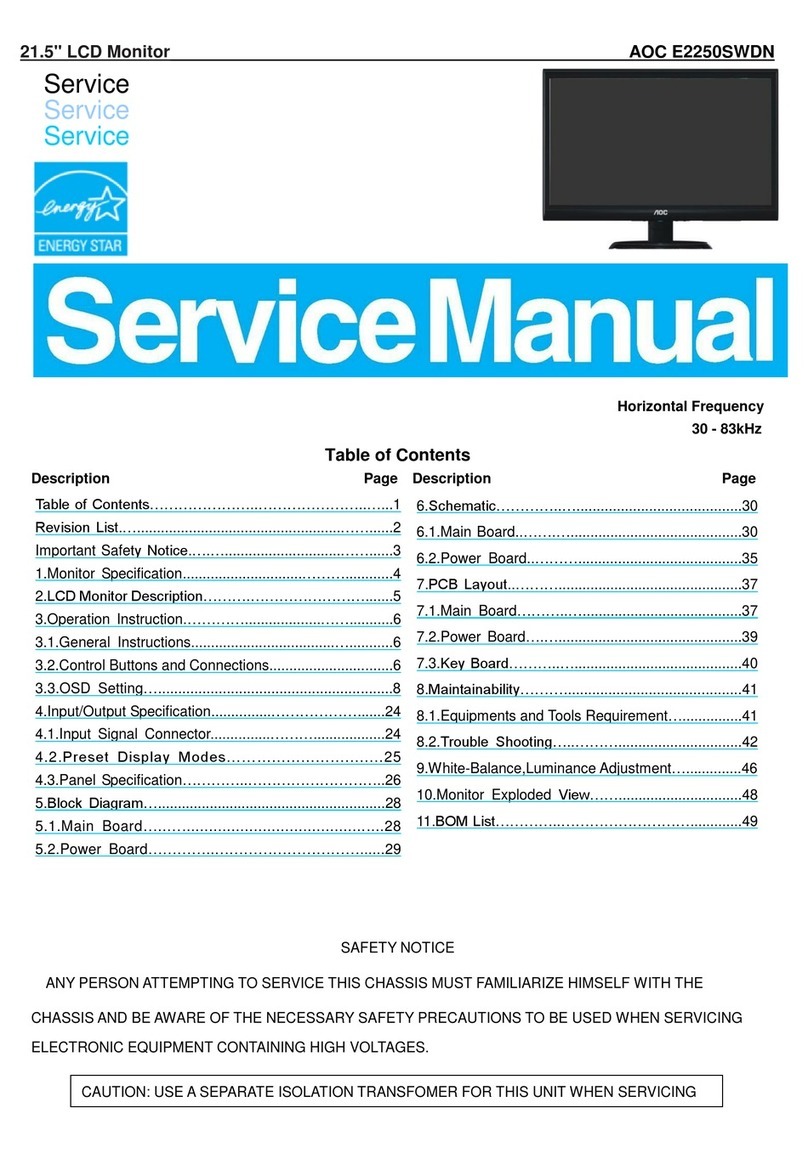Ronan X16PDM Series User manual

Series X16PDM
Computer Annunciators
Hardware Manual
REVISION: 1.0
DOCUMENT NUMBER: X16PDM-3002
DATE: 1/6/03
EDITOR: Nana Lee, Mark Layos Ronan Engineering Company
APPROVED: __V.J.____________________________________ __1-14-03_______
Project Manager Date
APPROVED: __R.H.____________________________________ __1-14-03_______
Engineering Manager Date
APPROVED: __A.G.____________________________________ __1-14-03_______
QA Date
Ronan Engineering
21200 Oxnard Street, Woodland Hills, CA 91367
TEL (818) 883-5211 FAX (818) 992-6435
Direct urgent problems to: 1-800-327-6626
Copyright 2002 Ronan Engineering Company. All rights reserved. This document may not be
reproduced or transmitted in any form, electronic or mechanical, including photocopying,
recording, storing in an information retrieval system, or translating, in whole or in part, without
the prior written permission of Ronan Engineering Company.

Rev 1.0 Series X11CA Common Alarm Annunciator Systems Operating Manual:
Revision Log
Hardware Control-© 2002 Ronan Engineering i
REVISION LOG
Rev #
Description Date By Eng Appr QA
1.0 1/14/03 nLEEVJ RH AG

Rev 1.0 Series X11CA Hardware Manual:
Table of Contents
Hardware Control-© 2002 Ronan Engineering ii
1. OVERVIEW..........................................................................................................................1
1.1 Abbreviations.....................................................................................................................................................................2
1.2 Revision History................................................................................................................................................................3
1.3 References...........................................................................................................................................................................3
1.4 Specifications and Power Requirements .......................................................................................................................3
1.4.1 System Voltage..........................................................................................................................................................3
1.4.2 Power Source (System External)............................................................................................................................3
1.4.3 Temperature Range..................................................................................................................................................4
1.4.4 Inputs...........................................................................................................................................................................4
1.4.5 Response Time ...........................................................................................................................................................4
1.4.6 EMI/RFI Compatibility............................................................................................................................................4
1.4.7 Outputs........................................................................................................................................................................4
1.4.8 Controls......................................................................................................................................................................4
1.4.9 Diagnostic..................................................................................................................................................................4
1.4.10 Communications.......................................................................................................................................................5
1.4.11 Serial Protocols........................................................................................................................................................5
1.4.12 Network Protocols...................................................................................................................................................5
1.4.13 Serial..........................................................................................................................................................................5
1.4.14 Special Feature........................................................................................................................................................5
1.4.15 System Size................................................................................................................................................................5
1.4.16 System Weight...........................................................................................................................................................5
1.4.17 Warranty....................................................................................................................................................................5
1.4.18..Approvals(Pending).................................................................................................................................................5
2. X11CA HARDWARE...........................................................................................................6
2.1 X11CA Annunciator Display Modules..........................................................................................................................6
2.1.6 Quadalarm Module: Part NO: X11CA-4000.....................................................................................................10
2.2 X11CA Alarm Module: Part NO. X11-1047..............................................................................................................11
2.2.1 Power Sources..........................................................................................................................................................11
2.2.2 Field Contact Inputs................................................................................................................................................12
2.2.3 Micro controller (U2)..............................................................................................................................................12
2.2.4 Outputs.......................................................................................................................................................................12
2.2.5 RS485 Network.........................................................................................................................................................13
2.2.6 Input Response Time................................................................................................................................................13
2.2.7 Summary of Jumper Settings..................................................................................................................................13
2.3 Auxiliary Contact Module: Part NO. X11-1049 ........................................................................................................14
2.4 Cables ................................................................................................................................................................................15
2.4.1 X11CA to X11CA-IM without PB.........................................................................................................................15
2.4.2 X11CA-IM (P2) to PC (RS232)............................................................................................................................16
2.5 Mounting...........................................................................................................................................................................16
2.5.1 Mounting the Modules in the Alarm Cabinet.....................................................................................................16
2.5.2 Mounting the Alarm Cabinet to the Panel..........................................................................................................16
2.6 Wiring Instructions..........................................................................................................................................................19
2.6.2 X11CA-4000 Rear Terminal Arrangement and Wiring....................................................................................20
2.7. Power Up...........................................................................................................................................................................24

Rev 1.0 Series X11CA Hardware Manual:
Table of Contents
Hardware Control-© 2002 Ronan Engineering iii
2.8 Troubleshooting...............................................................................................................................................................25
2.8.1 General.....................................................................................................................................................................25
2.8.2. Non-operating Alarm System...............................................................................................................................25
2.9 Dimension.........................................................................................................................................................................25
2.9.1 . Models X11CA-RelayRack Mounted Series-4000 ......................................................26
3. EVENT SEQUENCES........................................................................................................28
3.1 Options..............................................................................................................................................................................28
3.2 Basic Sequence Types....................................................................................................................................................29
3.3 First-out Sequence...........................................................................................................................................................30
3.4 Sequences of X11CA......................................................................................................................................................31
3.4.1 A-1.............................................................................................................................................................................31
3.4.2 F1A-1........................................................................................................................................................................32
3.4.3 F1M-1.......................................................................................................................................................................33
3.4.4 F2A -1.......................................................................................................................................................................34
3.4.5 F2M-1.......................................................................................................................................................................35
3.4.6 F3A-1........................................................................................................................................................................36
3.4.7 F3M-1.......................................................................................................................................................................37
3.4.8 M-1............................................................................................................................................................................38
4. APPENDIX A: LIST OF FIGURES .................................................................................39
5. APPENDIX B: DATA CONVERSION (BIN TO DEC)TABLE...................................40
6. INDEX..................................................................................................................................47

Rev 1.0 Series X11CA Hardware Manual
1.Overview
Hardware Control-© 2002 Ronan Engineering 1
1. Overview
The RONAN Series X11CA Computer Annunciator system is a state of art annunciator
group system, designed to provide the most advanced data acquisition and monitoring
system that meet the requirement of the process and power industries in the most
economic way.
The X11CA-Interface Module of the system provides advanced communication
protocols to interface the external host computer, local network or plant network. For
field contact repeater or remote group alarms it utilizes common trouble alarm and
auxiliary relay outputs.
The followings are some of its key features.
§The system is offered in both the Window Annunciator model and the Remote
Chassis model.
§The Window Annunciator model feature Monalarm, Binalarm, Trialarm and
Quadalarm within Ronan’s standard 3.5 inch (89mm) by 3.5-inch (89mm)
mechanical cabinet modules.
§The Remote Logic system features high density input field contact capacity with
remote light indicators.
§Each single plug-in module is internally expandable from one to four input
channels and Monalarm, Bialarm, Trialarm and Quadalarm display units.
§It utilizes the state of art technology, Philips micro-controller.
§It holds up to four input alarm circuitry of high-speed conventional CMOS
integrated circuit solid-state design with maximum noise immunity and reliability.
§The polarity of each field contact is set as normally open or closed using jumper
switch for each channel.
§The most popular industry-wide sequences of ISA, such as A-1, A-4, A-5, A-6,
F1A, F1M-1, F2A-1, F2M-1, F3A-1, and M-1 are available.
§It is powered by external 24VDC power supply.

Rev 1.0 Series X11CA Hardware Manual
1.Overview
Hardware Control-© 2002 Ronan Engineering 2
§The maximum of 256 modules are allowed per system.
§Microprocessor Based system
§High noise immunity
§Field proven off-the shelf worldwide
§Serial input/output
§Comprehensive user configuration with standard windows software
Figure 1-1X11CA System
1.1 Abbreviations
GF : Global Function
CTA /CA : Common Trouble Alarm
FC : Field Contact
MEIN : First Out
AUX : Auxiliary Relay
TO : Transistor Output
H1 : Horn 1
H2 : Horn 2
NC : Not Connected
TCP : Transport Control Protocol.
IP : Internet Protocol
DWG NO : Drawing Number

Rev 1.0 Series X11CA Hardware Manual
1.Overview
Hardware Control-© 2002 Ronan Engineering 3
1.2 Revision History
Revision 0.1 : First Draft
Revision 0.2 : Second Draft
Revision 1.0 :First approved and released document
1.3 References
QA400 : Design Control
QA4000 :Design Development Quality Assurance Plan
QA4500 :Project Archive
X11CA-3000 : X11CA-IM Master Modules
X11CA-3001-IOM : X11CA Configuration Software User’s Manual
1.4 Specifications and Power Requirements
1.4.1 System Voltage
§Lamps, Logic –24 Vdc ±20%
§Field contacts –24 Vdc, 48 Vdc, 125 Vdc, 115 Vac, or 240 Vac
1.4.2 Power Source (System External)
§Power Supply –115 Vac 50/60 Hz; 240 Vac 50/60 Hz
§Converter –24 Vdc, 48 Vdc, or 125 Vdc
To specify the correct power supply, count the number of alarm modules
you need to power from the supply. Calculate the total requirements as
follows.
Total Watts = Number of Modules x Factor F + (F Aux.) + P (IM)
Model F Lamps F LEDs F Aux.
Relay
Adder P (IM)
X16PDM 10.5 W 7.0 W 4 W 10 W
Match the total wattage with the next higher power rating of the Power
Supply or Converter listed.

Rev 1.0 Series X11CA Hardware Manual
1.Overview
Hardware Control-© 2002 Ronan Engineering 4
1.4.3 Temperature Range
§Operating – 0°to 60°C (32°to 140°F)
§Storage --40°to +85°C (-40°to + 185°F)
1.4.4 Inputs
§Contact –Dry or Live; Normally Open / Normally Closed
§Field Selectable
§Interrogation Voltage –24 Vdc, 48 Vdc, 125 Vdc, 115 Vac, or 240
Vac
1.4.5 Response Time
§20 Milliseconds by default. It can be modified using the X11CA
Configuration software.
1.4.6 EMI/RFI Compatibility
§CE Compliant
1.4.7 Outputs
§Visual –Fast Flash, Slow Flash, Steady ON, Intermittent Fast Flash
§Audible –Dual, Selectable by Cabinet Module
§Auxiliary Relays –Form C, Selectable Form A or B; Normally not
Energized or Normally Energized
§Contact Rating –General Purpose: 1 Amps @ 28 Vdc; 0.65 Amp @
115 Vac
§Common System Trouble –Form C, 2 Amps @ 28 Vdc; 0.65 Amp @
115 Vac –Open Collector Transistor Output 200 mA @ 28 Vac
§Common System Reflash –Form C, 2 Amps @ 28 Vdc; 0.65 Amp @
115 Vac –Open Collector Transistor Output 200 mA @ 28 Vac
1.4.8 Controls
§Momentary Push Button: Integral or Remote; Single Pole
§Normally Open; +V Switched; Silence; Acknowledge; Reset, Test,
GP1, GP2
1.4.9 Diagnostic
§System Trouble Alarm (RUN) –Form C, 2 Amps @ 28 Vdc; 0.65
Amp @ 115 Vac
§System Trouble Alarm (RUN) –Indicating LED Green
§Communication Diagnostic (ERROR) –Indicating LED Red
§Transmit/Receiver LED Pair

Rev 1.0 Series X11CA Hardware Manual
1.Overview
Hardware Control-© 2002 Ronan Engineering 5
1.4.10 Communications
§Serial –RS485 (P1) to External Host
§Network –RJ45 (TCP/IP) to External Host
1.4.11 Serial Protocols
§MODBUS RTU, Allen Bradley, DF1, DNP 3.0, Ronan Proprietary
1.4.12 Network Protocols
§TCPIP (OPC)
1.4.13 Serial
§RS232 (P2) –System Sequence and Option Programming via Laptop
or Computer
§Software –Ronan X11CA Configuration
1.4.14 Special Feature
§Alarm Storage –256 Alarm modules with four alarm points each
§GP1, GP2 – Special Function Push-button Interface
1.4.15 System Size
§Basic Cabinet Module –3.50 inch (88.90 mm) x 3.50 inch (88.90 mm)
1.4.16 System Weight
§Per Cabinet Module –1.75 pounds (0.79 kg), Not Including Power
Supply
1.4.17 Warranty
§Three years
1.4.18..Approvals(Pending)
§UL: Underwriters Laboratories
§CE: Cenelec
•CUL: Canadian Underwriters Laboratories

Rev 1.0 Series X11CA Hardware Manual
2. X11CA Hardware Setup
Hardware Control-© 2002 Ronan Engineering 6
2. X11CA Hardware
The RONAN X11CA Computer Annunciator System with microprocessor based
electronics is assembled from basic 3.50 inch (88.90 mm) by 3.50 inch (88.90 mm)
modules to make up the overall size requirements and number of windows required.
The mechanical modules assembled from aluminum castings and extrusions provide
excellent heat dissipation for a continuously lit annunciator system and feature the
structural strength required in industrial applications.
The rear terminal is designed as a single piece molded plastic assembly per window
for durability. A small 4.00 inch (101.60 mm) wide x 6.00 inch (152.40 mm) deep x
1.00 inch (25.40 mm) high module (interface module) is provided to connect the
system to an external host.
2.1 X11CA Annunciator Display Modules
The X11CA Annunciator module allows field programmable selections of all
commonly used ISA sequences from a host computer.
The lamp display of each module can have single, dual, triple or quad alarm
channel alarm logic displays, and field contact polarity of each channel is selected
by setting the jumpers on the board.
2.1.1 Display and Name Plates
The colored nameplates can be supplied in five standard colors, (red, green,
amber, white, and blue) to distinguish such functions as fire alarm or shut
down…etc.
The Sandwich nameplates, an option exclusive to RONAN Visual Annunciator,
are generally supplied with white front lenses and colored back lenses. This
lens combination displays all windows white in non-lit status, changing to the
selected color in OFF normal condition. The Sandwich nameplates are for
lamps only.
Each lamp cell uses dual bulbs with 1 watt each, except Quadalarm.

Rev 1.0 Series X11CA Hardware Manual
2. X11CA Hardware Setup
Hardware Control-© 2002 Ronan Engineering 7
Page Intentionaly Left Blank

Rev 1.0 Series X11CA Hardware Manual
2. X11CA Hardware Setup
Hardware Control-© 2002 Ronan Engineering 8
Page Intentionaly Left Blank

Rev 1.0 Series X11CA Hardware Manual
2. X11CA Hardware Setup
Hardware Control-© 2002 Ronan Engineering 9
Page Intentionaly Left Blank

Rev 1.0 Series X11CA Hardware Manual
2. X11CA Hardware Setup
Hardware Control-© 2002 Ronan Engineering 10
2.1.6 Quadalarm Module: Part NO: X11CA-4000
The four windows Quadalarm Module represent the highest density of
annunciation in the X11CA series. The 1.40 inch (35.56 mm) high by 1.40
inch wide window is illuminated by two 1-watt lamps or LED indicators.

Rev 1.0 Series X11CA Hardware Manual
2. X11CA Hardware Setup
Hardware Control-© 2002 Ronan Engineering 11
2.2 X11CA Alarm Module: Part NO. X11-1047
Figure 2-7X11-1047C Module
2.2.1 Power Sources
The external 24 VDC power is supplied to the V+ jumper connector J5 (pin
7,15) and to the V-jumper connector J5 (pin 8,16) on the PC board.
The voltage regulator, VR2, and two resistors, R59 and R63, on the board
reduce the voltage down to 5 VDC.
The electrolytic capacitor, C32, and two ceramic capacitors, C17 and C19,
keep the voltage constant for load variations and voltage transients.

Rev 1.0 Series X11CA Hardware Manual
2. X11CA Hardware Setup
Hardware Control-© 2002 Ronan Engineering 12
2.2.2 Field Contact Inputs
Field contacts can be set as normally open or normally closed by setting
jumper switches (J11, J6, J7, and J8) either as NO or NC on each alarm
module.
•Dry contact –The system internal interrogation powered 24 Vdc.
•Live contact –0pto-isolated inputs. The opto-couplers, U1, U5, U7 and
U11, provide 2,500-volt isolation.
•24 Vdc, 48 Vdc, 125 Vdc or 115 Vac, 240 Vac
2.2.3 Micro controller (U2)
U2 is a Single-Chip 8-Bit Micro controller manufactured in advanced CMOS process
and is a derivative of the 80C51 flash micro controller family.
The device contains a non-volatile 32KB Flash program memory that is serial In
Application programmable. That means the micro controller fetches a new program
code and reprograms itself while the application is running in the system.
After the serial connection is made between the host computer and the X11-1047
Alarm module via the X11CA-IM (Refer to the Figure 2-17 X11CA-2000 Rear
Terminal Wiring Diagram), the X11CA configuration software on the host computer
uses IAP for the remote programming to erase and reprogram the content of the Flash
Memory. (For reprogramming the Micro controller see X11CA Software Manual).
It is synchronized by the clock generator (Y1) that generates 18,432 MHz oscillations.
2.2.4 Outputs
•Auxiliary Output Signals:
These signals provide open collector outputs to the energized relays on the
auxiliary modules, and it is programmable for various system functions.
•Transistor Output: Transistor output provides an open collector output
(pulling to V), and it is programmable for various system functions. A
typical application is to drive an auxiliary relay following the field contact
or lamp logic.
•Lamp Drivers (U3, U12, U13, U14): Lamp drivers are designed to operate
at 70V (1A) with over voltage, over temperature and short circuit
protection.

Rev 1.0 Series X11CA Hardware Manual
2. X11CA Hardware Setup
Hardware Control-© 2002 Ronan Engineering 13
2.2.5 RS485 Network
The X11CA Annunciator uses a typical RS-485 four-wire multidrop
configuration system. All slave modules communicate with the master module,
X11CA IM only, and the address of each slave module is selectable by the
jumper, J9, using the binary code.
Jumper 9
Each X11CA module board must have a unique binary address to
communicate with the X11CA Configuration program and the X11CA-
IM. This address is determined by setting the jumper, J9.
Refer to the conversion table on page 40 to convert from 000000012to
1111 111110. Jumper 9 of Appendix B: Data Conversion (Bin to Dec)
Table shows the switch setting for 000000012.
The RS485 driver, U10, is used as a RS485 to TTL converter.
2.2.6 Input Response Time
The default response time of each point is 20 milliseconds, but it can be
modified using the X11CA operating software.
2.2.7 Summary of Jumper Settings
Jumper
NO. Description Default
Settings
J1 Connector to the Terminal board (Module No. X11C451)
J2 RS485 terminator. If both top and bottom pins are
connected, RS485 termination will be enabled. No connection
except the first
alarm module
J3 Not Available
J4 Connector to the front panel of the Lamp board (Module No.
X11-1038)
J5 Connector to the Communication module (Module No. X11-
1033)
J6 Polarity of field input contact B. Either Normally Open or
Normally Closed. NO or NC.
J7 Polarity of field input contact C. Either Normally Open or
Normally Closed. NO or NC.
J8 Polarity of field input contact D. Either Normally Open or
Normally Closed. NO or NC.

Rev 1.0 Series X11CA Hardware Manual
2. X11CA Hardware Setup
Hardware Control-© 2002 Ronan Engineering 14
J9 Address of the alarm module. Each alarm module must have
a unique address number.
For the address setting, refer to the AppendixB: Data
Conversion (Bin to Dec)Table on page 40.
See the
AppendixB:
Data
Conversion
(Bin to Dec)
Table
J10 Used for activating the boot trap loader during the first
programming time into the firmware Not connected
J11 Polarity of field input contact A. Either Normally Open or
Normally Closed. NO or NC
J12 Converter from R485 to TTL for Receiver and
Transmission.
§Receiver: If pin 1 and 3 are connected, the
converter is enabled by the micro-controller (U2).
If pin 3 and 5 are connected, it is always enabled.
§Transmission: If pin 2 and 4 are connected, the
converter is enabled by the micro-controller (U2).
If pin 4 and 6 are connected, it is always enabled.
Receiver: pin 3
and 5 are
connected.
Transmission:
pin 2 and 4 are
connected.
Figure 2-8Summary of the X11-1047 Jumper Settings
2.3 Auxiliary Contact Module: Part NO. X11-1049
The auxiliary contact module is available with a single, dual, triple, or quad relay
circuit, accommodating the window density selected. The modules can be plugged in
the front of the system and may be purchased initially or added later. The terminals
for the contact outputs are furnished as a part of the system. Each relay provides a
selectable form A or B type contact with a rating of 2A at 28 Vdc. Normally open
(Type A) or normally closed (Type B) contact is available for each alarm point at
their respective rear terminal block terminals 5 and 6. The normal operation (NO/NC)
can be changed on the auxiliary contact module at headers marked AUX1, AUX2,
AUX3, or AUX4.
WARNING:
Before setting up the X11CA system, make sure that power to the system is
completely off.

Rev 1.0 Series X11CA Hardware Manual
2. X11CA Hardware Setup
Hardware Control-© 2002 Ronan Engineering 15
Figure 2-9Jumper Setting on the Quad Relay Circuit
2.4 Cables
2.4.1 X11CA to X11CA-IM without PB
Figure 2-10 Cable for X11CA to X11CA-IM Connection
2.4.2 X11CA-IM (P2) to PC (RS232)

Rev 1.0 Series X11CA Hardware Manual
2. X11CA Hardware Setup
Hardware Control-© 2002 Ronan Engineering 16
Figure 2-11 RS232 Cable from Host PC to X11CA-IM Connection
2.5 Mounting
Refer the mounting diagrams on the enclosed CD ROM, X11CA Drawings and
Sequence Chart, for detail.
2.5.1 Mounting the Modules in the Alarm Cabinet
The annunciator is shipped with all of the alarm/lamp modules, auxiliary
contact module(s) and flasher module(s) installed in the cabinet, as specified
by purchase order.
External horn relay(s), reflash relay, common alarm relay, relay sockets are
packed separately.
2.5.2 Mounting the Alarm Cabinet to the Panel
1. Position the X11CA alarm cabinet into the cutout hole on the panel.
Figure 2-12 Cutout area of the panel
Table of contents
Other Ronan Monitor manuals

